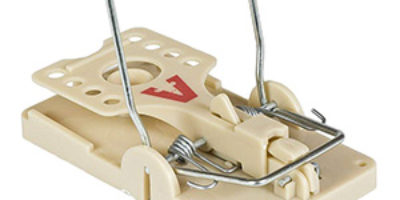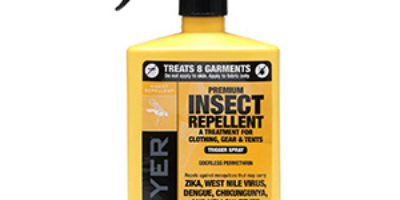Contents
We are supported by our readers. When you buy through links on our site, we may earn an affiliate commission at no additional cost to you.
Ants can be traced in every place in the world. They compose of a simple family of female workers, males, and a queen. Their habitat solely depends on their type of species. Particularly, in plants or in wood structures or in eating areas of the house. They are a great nuisance if they trail into the house in their forages. Well, we are here, essentially to keep you informed on varying and most reliable methods based on scientific research on the best way to kill ants. We bring facts, effective ways to get rid of ants, ant killer reviews, and a guide for how to select the best ant killer ideal for your house, yard, or even your car.
Best Ant Killer Reviews
[go_pricing id=”ant”]1. TERRO Liquid Ant Baits T300 – Best Ant Traps
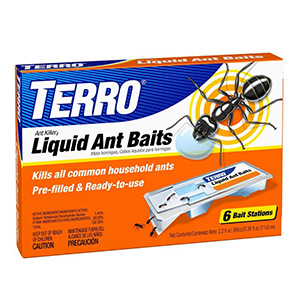
The TERRO T300 ant traps are bait based ant killers that kill the majority of common household ants. Has Borax as the active ingredient which attracts ants fast. However, it is a slow killer as it allows for the bait to circulate among the worker ants leaving enough time for the ant to go back to the nest and share the dose with the rest of the whole mound.
Each ant that consumes the bait will die within 24 to 48 hours. Designed to give the foraging ants enough time to share the bait with the rest of the colony. Ultimately, this will allow you to get rid of the ants that you see and the ants that you don’t see.
It comes in a pre-filled and easy to use package, each box contains six baits. Simply put the ant bait stations near ant trails or areas where there are a big number of ants for efficient extermination of the ants. It is best used near indoor areas where ants are spotted.
Pros:
- With Borax as the active ingredient, this bait has a high success rate in killing a variety of ant species.
- It’s capable of killing an entire ant nest including the queen.
- Pre-filled and ready to use bait tabs eliminates handling of chemicals and also prevents the liquid from drying out.
- Has a compact design which makes them perfect for placing them along baseboards, in corners, or under cabinets.
Cons:
- A slow acting method may take up to two weeks to kill the entire colony.
- The ant trap can also be easily dropped. As a result, spilling the inside chemicals leaving a sticky toxic stain that should not be touched by children or pets.
2. Advion Ant Gel Bait – Best Ant Gel
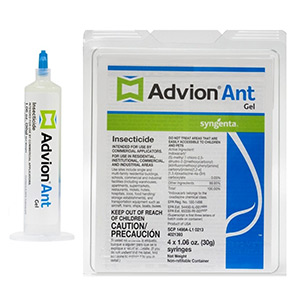
One of the popular best indoor ant killers in the market is the Advion ant gel insecticide from Syngenta. It has Indoxacarb as an active ingredient, effectively useful in killing a broad range of ant species. With a high attracting power, it targets a larger chunk of ant species inclusive of the sweet feeders.
Ants consume the gel bait over an extended period, resulting in thorough control of the infestation. Consumed by the workers then taken back to the colony to be shared. Providing a high kill rate, eliminating the ant infestation in a short period of time.
Further, it’s very easy to use, comes with plungers that you simply squirt where the ants are coming from. It is highly recommended for ants that hide in cracks. It can also be used for a long term and has no odor and leaves no staining effect. Labeled for food-handling establishments.
Pros:
- Features a highly attractive formulation targeting most ant species including all sweet feeders. Balancing targeted ant control and environmental impact.
- Easy to use and can be applied to vertical surfaces and for ants that hide in cracks.
- The gel locks in moisture for extended attraction to ants during all seasons.
- Impacts all life cycle stages for total ant extermination. It’s also an effective way of stopping ant reproduction.
Cons:
- Not suitable for all ant species such as ants who don’t like sugar.
- It’s also not really suitable for outdoor use as it should stay away from direct sunlight.
3. Amdro Ant Block Home Perimeter Granules – Best Ant Bait
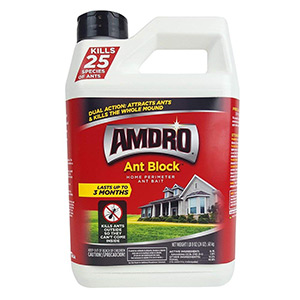
For total eradication of ant infestation, comes the Amdro ant block for home perimeter. These ant bait granules have Hydramethylnon as the active ingredient. It works even when you can’t find the nest, unlike contact pesticides.
It can be used outdoor and around the house perimeter. Creating a barrier around your house for maximum protection that lasts up to 3 months. Primarily, killing the ants outside before they come inside. Killing up to 15 different ant species.
In addition, it is averagely long-term use and can be used about 6 times covering an average U.S. household. Typically, it kills the queen within one week and the whole colony within two weeks of application. The pellets may be too big to fit in cracks thus may be crushed to fit in and perform in narrow areas.
Pros:
- A dual action, starting by attracting the ants and then killing the whole mound.
- Easy to use, leaves no stains and no mess for areas such as patios, driveways, flower gardens, wood piles, and trees.
- Can be used against fire ants, Texas leaf-cutting ants, and other ant species effectively.
- In fact, it uses a slow-acting poison which can kill the entire colony, including the queen.
Cons:
- It can not be used in vegetable gardens nor while pets are in the treatment area. However, you can let your pets back once the dust has settled.
- The granules lose their efficiency if they get wet. It’s recommended not to apply it when the ground is soaking wet or when heavy rains are expected.
4. Raid Ant & Roach Killer – Best Ant Spray
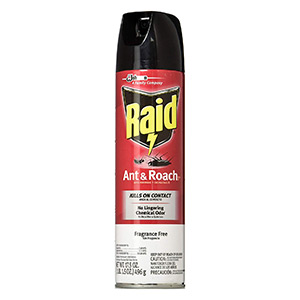
The Raid ant and roach killer insecticide spray with the active ingredient of Imiprothrin and Cypermethrin. It is a multi-killer spray, capable of eradicating up to 26 different bug species. Kills on contact and continues killing with enduring action that services you for up to 4 weeks when used indoors.
Easy to apply as it is an aerosol, it only requires you to spray. Contains no Ozone depleting substances and has no fragrance and it can be sprayed in cracks, corners, windows, doors among other hiding places.
In addition, it does not leave a lasting effect once sprayed. This is due to the safety of pets and babies in the house. It is usable both indoors and outdoors. When used outdoors, observe the direction of the wind as this may influence its efficiency.
Pros:
- An affordable and easily obtained product.
- Fast acting direct ant killer that also works on different insect species.
- Has a residual action even after you spray that lasts for up to 4 weeks.
- Easy to use, all you have to do is shake it, hold the container upright, and spray the area that requires treatment.
Cons:
- Doesn’t work well on all ant species.
- Leaves a slight chemical odor.
5. Safer Brand Diatomaceous Earth – Best Ant Powder Killer
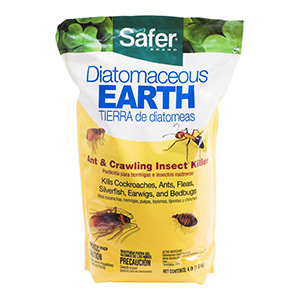
A highly effective ant killer with Silicon Dioxide as the main active ingredient. Scientists name boric acid, diatomaceous earth, and other plant-based oils to be among the most effective organic treatments for crawling insects extermination.
Made 100% with diatomaceous earth, it is a non-staining dust-like product specifically lethal to ants and insects with delicate exoskeletons. Once the ants walk on the power, it sticks to their exoskeleton and causes them to dry out. Leaving crawling insects dead in the dust.
Best of all it is registered with the Environmental Protection Agency. When applied as directed it won’t have adverse effects on humans or the environment. Apply confidently outdoors or indoors, making sure to sprinkle all crevices and cracks where insects may be, hitting these insects directly where they live and breed.
Pros:
- A great choice for organically minded people who prefer an eco-friendly and non-toxic approach to ant control.
- Best outdoor ant killer with a dual-action formula that quickly kills a wide range of ant species by touch and ingestion.
- It will begin to work in just a few minutes and completely eradicating crawling insects in as little as two days.
- Insects cannot develop a resistance to it since there are no chemicals to which they can build up immunity from.
Cons:
- Will not necessarily kill the entire colony or the queen. As it only kills the ones that come into contact with it.
- Although it is non-toxic, it is not considered food grade. it is recommended to apply it while wearing a face mask as it can cause breathing or eye irritations.
6. Ortho Home Defense Insect Killer – Best Ant Poison
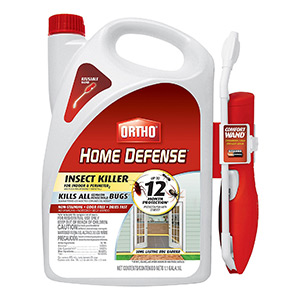
Has Bifenthrin and Zeta-Cypermethrin as the active ingredients for this powerful ant killer. The Ortho home defense is usable both indoor and outdoor with a multi-functionality of killing various bugs.
Capable of killing pyramid ants, ghost ants, carpenter ants, crazy ants, fire ants, Argentine ants, pavement ants, pharaoh ants, and other ant species.
It comes in a ready and easy to use package that is easy to use for small and larger areas. You do not have to bend or get hand fatigue when using it. It has no smell, leaves no stain, and dries fast on application.
In addition, it can be used for a long term of up to 12 months. As a result, it keeps bugs away for quite a good period of time. Use with confidence in bathrooms, kitchens, bedrooms, and other areas.
Pros:
- Allows for a long protection that lasts for up to 12 months after application.
- Effective method on a wide range of insects. Capable of eradicating over 130 insect species.
- No bending or hand fatigue with its reusable wand handle.
- In addition, it has a non-staining formula and is odorless.
Cons:
- It’s effect decreases when exposed to water or in sun-exposed areas.
- Toxic, as a result, it is harmful to bees and other good insects.
Best Ant Killer Comparison Chart
| Product/Feature | Type | Weight | Odor | Eco-Friendly | Targets |
|---|---|---|---|---|---|
| Terro T300 | Bait Trap | 6 Traps x 0.36 Ounce | Odorless | No | Ants |
| Advion Ant Insecticide | Bait Gel | 4 Tubes x 1.06 Ounce | Odorless | No | Ants |
| Amdro Ant Block | Bait Granules | 1.5 Pounds | Odorless | No | Ants |
| Raid Ant & Roach | Aerosol Spray | 2 Cans x 17.5 Ounce | Odorless | No | Ants + Roaches |
| Diatomaceous Earth | Dust Powder | 4 Pounds | Odorless | Yes | Ants + Crawling Insects |
| Ortho Home Defence | Liquid Spray | 1.1 Gallon | Odorless | No | Ants + Crawling Insects |
How to Kill Ants Indoor and Outdoor?
A study conducted by the University of York biologists indicated that ants share food with each other in order to help them survive tough times. Ants prefer to move and eat together as a colony. They usually look for food via the same route from their nest to the food source by leaving a pheromone trail that can be tracked by the rest of the colony. The fact that they share food, makes it far much easier to kill them.
Outdoor Ants
Despite sharing your house, ants also have hideouts outside of your house such as your garden, yard, porch, patio, or even your car. As they are creatures of habit, you can usually spot where they live and trail. A good example is the fire ants. Fire ants are known to sting. Their stings may have a health hazard to loved ones.
Entirely, ants build their nests outside your home and they sometimes cause crop damage. They are fond of hiding under the mulch, on trees, and in holes around the house. When they lack food outdoors, they now forage into the house, which should be prevented at all cost. The best way to prevent this is to eliminate the ants outside the house before they enter your home. Your type of control strategy should depend on the type of ant infestation that is responsible.
Indoor Ants
Ants are either seasonal or an all year menace in our residential houses. A good number of ants are fond of building their nests outside our houses but become annoying when they forage indoors in their trails looking for food. The moment they discover any signs of food in our houses, they make their way in the house and transport the food back to their colonies outside.
However, some species go an extra mile. They make their way in the house and build their nests indoors. Carpenter ants, odorous ants, pavement ants, thief ants, acrobat ants, and house ants are fond of residing indoors. Among the various types of ants, Pharaoh ants are the most stubborn. Compared to other seasons, ants are less common during winter.
What is the Best Ant Killer?
Ants kill pests like bedbugs and fleas. However, they can be annoying when you notice that they have become intruders. Well, these ants might be a nuisance at home, kitchen, bathroom, or even in your yard. Here, we will informatively showcase the best ways to get rid of ants and go through what’s good to kill ants in various ways and habitats. We are committed to availing you the best ant killer from our most detailed and reliably researched options that will enable you to completely get rid of ant infestation in your surroundings.
Ant Baits
A series of experiments on the most attractive baits on various ant species shows that ants carry the baits into their nests, as a result, killing the other ants. The best ant bait includes sugar, soybean oil, and corn grits mixed with a slow act poison. These baits were fatty thus preferred by ants. It takes quite some time to get rid of an ant infestation or killing an entire colony of ants. Basically, the foragers take the lead while heading the trail to the baits, which eventually reaches the queen, and kill all of them together. Ant bait comes in different forms, in a gel form, granules, powder and can be even contained in a special ant trap.
- Advantages of Ant Bait: They are considered a long-term solution and they can be used both indoors and outdoors. Works best in temperatures above seventy degrees Fahrenheit. They are easy to use, just place the baits along the trails when they forage in an aim to get food.
- Disadvantages of Ant Bait: Sometimes they may move in different trails. Therefore, you may be forced to bait all the trails you meet. Keep checking and re-baiting the ants daily until you get rid of all of all ants in every specific location. It’s also important to note that some ants prefer sugar-based baits while others prefer protein based baits which will require you some time experimenting.
Ant Traps
Ant traps are containers filled with ant bait. The best ant traps are prefilled with an attractant bait mixed with a slow acting poison. They are a very effective solution of inside-out ant control. Designed to attract most foraging household ants. The food base inside the bait mixture works to attract all passing ants. They feed on it and transport pieces to their nest. Then the slow acting poison will start to take effect. By that time ant activity should be obvious quickly with a complete eradication to be seen in just a few days. They are a good option for ants that you don’t see where they come from or where they hide.
- Advantages of Ant Traps: These ant traps are great as they are capable of destroying the entire mound. By taking advantage of their social nature of sharing food to eradicate the colony. They are easy to use as these ants traps usually comes pre-filled with bait so it does not require you to handle any chemicals. They are also small in size allowing you to place them anywhere.
- Disadvantages of Ant Traps: The main problem is that these traps attract a lot of ants when you first start using them. And it might take up to two weeks before killing the entire colony. Ants traps are usually confined in a small plastic station that can be easily dropped, spilling the inside chemicals leaving a sticky toxic stain.
Ant Gel
Ant gels contain an insecticide, capable of spreading throughout the entire mound or colony. They work similar to baits containing a mix of slow acting insecticide with an attractant that ants like. Ants recognize this attractant as food, so they call other ants to feed. As well as, they take some of it back to the nest to feed the queen and larvae. Ultimately, exterminating the colony. Ant gel usually targets sugar loving ants. The gel comes in a tube syringe that u can easily squeeze its components to target particular places around your home where ants regularly enter.
- Advantages of Ant Gel: A good long-term solution that can remain active for up to three months after application. They are also capable of killing the entire colony. Ant gels are great to cover up holes, crevices, cracks, and other narrow or hard to reach areas where ants usually hide. They are easy to use and they give you the freedom to apply anywhere you want.
- Disadvantages of Ant Gel: Usually this form of ant control loses it’s effectiveness when they get wet so you would need to reapply. Also when the gel dries, it loses its appeal to the ants so they avoid it. They are slow acting with an attractant. Which means you may start seeing more ants, however, in the end, it will destroy the whole colony.
Ant Granules
Granular ant bait is a good effective way of ant control, letting you target worker ants as well as their nest. The granules also use a bait to attract the ants and a slow acting poison to wipe out the colony. The granules usually use a naturally occurring type of fungus that is alluring to attract the ants. Once they find it, they consume it, as well as, carry it back to their nest, and in a matter of a few days, the ant colony will perish. Granules usually target protein loving ants. You can use them both indoors and outdoors, but you’ll probably find them more suitable for outdoor ant problems such as the backyard or garage.
- Advantages of Ant Granules: They offer a long-term solution that can last for at least several days after applying. They are great for outdoor ant problems. Ant granules are also easy to use as all you have to do is sprinkle the granules where you see the ants trail. In addition, they are usually low toxic for animals which is good if you have pets around.
- Disadvantages of Ant Granules: They are usually large in size which limits its versatility as for where you are intending to apply. This may also result in the ants avoiding the granules to find other sources of food. Although they are good for outdoor use, some of the granular ant baits lose their effectiveness if they get wet. For example, you should not apply them if it’s going to rain or if the grass is soaking wet in the garden.
Ant Spray
Applying an ant spray is easy. Ant sprays come as aerosols or as liquid spray poison that kills upon contact. Some sprays are applied periodically. However, scout ants are quite smart when it comes to sprays, as they turn and look for other ways without the spray. But the best ant spray tends to have long residual effects. This means that the effect will continue for a period of time after spraying. Ant sprays should be sprayed in the house, in the car interior, and in other places that you may not wish to place baits or repellents. Apply the spray diligently, holding the spray 18 inches from the ground. It is advisable to spray one foot wide to observe effectiveness. You can also make homemade ant sprays using vinegar or lemon, but usually, they aren’t as effective.
- Advantages of Ant Sprays: Ant aerosol sprays are a great choice for dealing with seasonal ant problems and they work very well at killing the ants that you can see. Aerosols contain potent insecticides and tend to have a more consistent effect. A spray can act as a contact killer to break up the trails and prevent the trail from returning.
- Disadvantages of Ant Sprays: Aside from being a short-term solution, many sprays contain chemicals that can be harmful if inhaled. As a result, make sure to keep the area well ventilated and keep children and pets away from the area until the spray sits. While also keeping your food well covered to avoid contamination. Additionally, sprays are usually not sufficient to kill an entire colony.
Ant Poison
Ant poisons usually come in different forms, however, it’s usually liquid. Each type of poison works in a different way. Some have a fast-acting poison which kills upon contact. While others have a slow-acting poison which can take up to a week. It all depends on the ant problem that you are having. If you notice just a few ants then a fast-acting ant poison will suffice. But, if you see a trail of ants scattered in different areas then a slow-acting poison would do better. In general, the best ant poison usually has a slow acting poison.
- Advantages of Ant Poison: Slow acting liquid ant poisons are good for ant infestation. As it does not kill the ant worker right away. Instead, it allows for time to carry the poison back to the colony, killing the queen and the entire mound. Liquid poison is easier for ants to transport back to their nests. Regardless of the ant poison used in most cases, you end up eradicating the ant problem.
- Disadvantages of Ant Poison: Strong poisons with attractants may also appeal to the wildlife. It might end up killing beneficial insects, birds, fish, or other animals in your yard. So be careful where to use it. If you notice that your ant poison is doing more harm than good, then it’s better to switch to a different form of ant control.
Ant Powder
For organically minded people who prefer an eco-friendly approach to ant control, ant powder killers that use diatomaceous earth are a great choice. It consists of the fossilized remains of marine phytoplankton. The ant’s exoskeleton sticks to the powder as soon as they pass on it and it causes them to dry out, resulting in a quick and orderly death. The toxicity level of ant killers may vary. However, keep in mind that all ant killers are still not safe for humans or pets. You should always use them wisely as described on the label.
- Advantages of Ant Powder: They are a fast method of getting rid of ants. Unlike ant sprays where you will need to keep spraying on sight, with ant killer powders, you just dust the main areas where you see ants, then leave it to do its work. They are also effective for both indoor and outdoor areas. In addition, they are usually a more green and eco-friendly solution. Sometimes they are also food graded.
- Disadvantages of Ant Powder: The main problem with ant killer powders is that they are messy. Sprinkling white dust in corners is not very appealing. Applying them also requires you to wear a dust mask as they are dangerous to inhale. You are also required to let children or pets out of the area of treatment until the dust settles in.
Ant Repellents
Repellents are substances whose purpose is to repel ants or insects from settling or approaching a particular host. They create barriers that keep ants away. Ant repellents almost work like sprays, but all they do is just repel. They contain various substances that are unpleasant to ants. These substances create tastes and scents that make the ants uncomfortable. Apparently, there has been barely any repellents that have been identified by names as most scientists claim. Nevertheless, there are various oils that have a repelling action on ants. Remember to spray in cracks, window sill, corners, baseboards, holes, and even on the skirts of your perimeter wall where the ants are likely to enter.
- Advantages of Ant Repellents: In a research on ant control, Doctors H. Shorey and P. Philips, reveal a nature-based repellent called Farnesol. They informatively indicate Farnesol as a far much better repelling compound for ants. It validly takes three months of rebellion, when you use a cotton dipped in a combination of Stickem and Farnesol. Home available repellents may include vinegar spray, salt with water solutions, essential oils like lavender among others. They are natural and safe.
- Disadvantages of Ant Repellents: Some repellents basically redirect the ants. As a result, they may find their way in another loophole in the house. So it is advisable to thoroughly apply the repellents. However, an ant infestation would require additional solutions such as bait or exterminators. You may also be interested to check our best mosquito repellents article.
Lastly, for your safety and the safety of the wildlife, always follow the manufacturer’s instructions very carefully before using any ant killer method.
How to Get Rid of Ants in the House, Kitchen, Yard, Car, …
Taking up the best programs to control ants is an ideal action when keeping the six-legged creatures away. Proper sanitation techniques can go a long way to preventing ants from invading your home and kitchen. Most ants you see are simply looking for food, so the harder that it is for them to find food, the less likely you will see them. Pest management is essential in our homes in this case. Check out these 6 steps to get rid of ants completely:
- Identify the types of ants that infest your house. Apparently, different ants adopt different habitats and vary in habits as well. Killing ants would be easy and effective when you perfectly know and understand what type of ant you are dealing with.
- Do not leave mulch or timbers near your house as this would create moisture and make a conducive habitat for them.
- Clean as you go principle, mostly in the kitchen. Wipe out any food particles or spillages in the kitchen or the whole house at large. Avoid dirty dishes in the sink and get rid of debris in your house, as you ensure everything is spotlessly clean.
- Keep your house dry always, by fixing any water leakages, ensuring a perfect work-ability of your downspouts and gutters. This keeps no moisture around, hence no condition for ants to survive.
- Seal holes and cracks in order to eliminate any loopholes for ants to find their way in.
- Apply your ant killer of choice in all viable entry points and your house perimeter with repellents in order to keep the trail away from the house.
Applying all these methods will 100% destroy any ant infestation in your residential areas. As well as prevent them from coming back.
Most Common Types of Ants
Ants are six-legged insects with elbowed antennas. They have a slender, oval abdomen joined with their thorax. Ants have a large head with two sets of jaws. One to dig and carry various items, for instance, food or soil particles and the other for chewing. Particular species have a sting at the end of their abdomen.
Household ants hide in the most common places and can be located easily, respective of their types. They are mostly where there is food, moisture, enclosed areas such as wall voids, beneath floors, behind window frames, and even under appliances. Nevertheless, ants like sharing the foods that we eat and even live so close to humans. Meat, sweets, starch, liquids, and most other sugary eateries are favorable for them. Ants have funny names too some of them are acrobat ants, crazy ants, sugar ants, ghost ants, rover ants, harvester ants, and thief ants, among others. Below we discuss 5 of the most common types of ants, making it easier for you to identify them.
Argentine Ants
Dark brown in color with a 1/16 to 1/4 inches in size, they are mainly habituating in the southeastern area of the United States. They like living in wet places near food places. Argentine ants do not have any threats health-wise, however, they are famous for producing a very bad smell when crushed. It is also common that they destroy crops in large amounts.
Odorous Ants
Slightly different from the Argentine ants, they are dark brown to black in color and found all over the United States. They like making their habitat in exposed soils, under floors in homes, and in wall cracks. Odorous as the name suggests, they produce a very musty smell when crashed. Despite being harmless to the health of humans, they may contaminate food, therefore, you ought to avoid them.
Carpenter Ants
Carpenter ants mostly construct their nests outdoors, particularly in wood sources. They make their way into our houses via cracks, windows, doors, or damaged woods. Carpenter ants have a reddish black in color and are fond of staying in cool dump climates in the Northern suburbs of the United States. They cause a mess as they trail through woods in order to build their nests.
Pavement Ants
Another type of common household ants are pavement ones and they are found almost everywhere. They have no health risk and live in cracks under pavements where they mostly build their nest there as well. They possess a dark brown color and are found all over the United States.
Fire Ants
These ants have a very painful sting on those who disturb their peace in their nests or anywhere. The sting might have a swelling effect but even more severe for those with allergies to insect stings. Mostly they live and build their nests outdoors, they are dark reddish brown in color. They get their way through wall cracks around the house.
Interesting Facts About Ants
The ant’s life cycle takes eight to ten weeks to mature from the eggs, larva through pupa and finally the adult stage. They live in colonies led by the queen. When a queen is fertilized, it can lay up to 1 million eggs over a long time.
- Ants have quite an amazingly long lifespan. They can live for up to fifteen years. In fact, once an ant queen has lived for 30 years entirely in Idaho.
- Occasionally, many people perceive ants to be kissing one another. Actually, that is not true. In such cases, they have been observed to be feeding one another. They especially feed one another during nurturing.
- In most cases, ants are not poisonous. However, there is an exception. Maricopa Harvester is one of its kind. The bullet ant sting is the most painful of all. Apart from being the most poisonous in the world, its sting is 12 times as painful as a bee sting.
- Regardless of their small sizes, ants are very hard working insects. They can move as much as 50 tons of soil from one place to another over a period of 1 year. They can carry objects that are fifty times their weights, as a result, regarded as the strongest insect relative to its size.
- Ants can travel a distance of up to 700 meters from their nests and back without a struggle.
- Ants have abnormal respiratory systems. They do not have lungs, instead they breath using spiracles. They can survive for 24 hours under water. The spiracles enable them to breathe in difficult situations.
- The largest colony ever seen was over 2 miles long. Scientists considered it to be separate super-colonies. Surprisingly, they discovered the colonies to be related to one another. For example, Argentine species had grown to such a huge colony as they did not fight one another for survival.
Interestingly, ants were the first farmers before humans! They harvested and grew crops millions of years back, roughly 70 million years, even before humans thought of embarking on it. They also fertilized and stopped pests from intruding in our farms.
Bottom Line
To wrap it all, ants are social insects but get pesky when intruding in our residential areas. In order to get rid of ants perfectly, you are required to understand that there are different types of ants, living in varying habitats. Once identified, you should make the right choice to get the best ant killer, that would serve you to your satisfaction. We have extensively researched from very reliable sources and tested products, to bring you the best way to kill ants in different methods so you would pick the most suitable solution for you. With our ant killer reviews, comparison tables, and guides we tried to compile all related information on how to get rid of ants.

